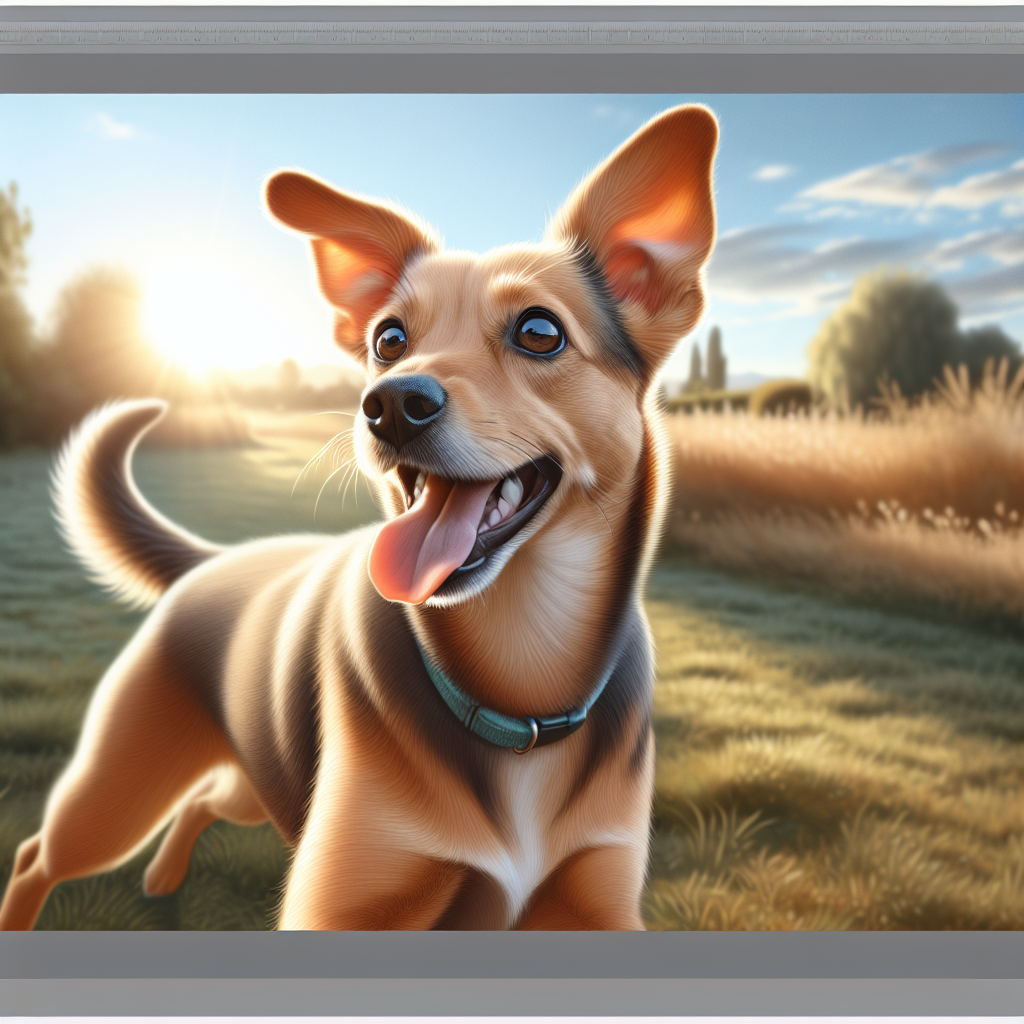The Flea Battle Begins: Recognizing the Enemy

Ah, fleas. Those tiny, pesky invaders that make our dogs scratch like they’ve got a vendetta. Recognizing fleas on dogs is like spotting a needle in a haystack—if the needle could jump and bite. These critters aren’t just annoying; they can be a real health hazard. You might notice your dog scratching more than usual or see little black specks on their skin. Flea dirt, they call it—dried blood and flea feces. Delightful, right?
Now, it’s not like our dogs can tell us, “Hey, I’ve got unwanted guests!” So, it’s on us to play detective. And trust me, once you see one, there are likely more. It’s like they travel in packs, having a flea party on your pup’s back. The good news? You can kick them out. But first, you’ve got to know what you’re dealing with.
Quick Fix or Quick Fiasco? Rubbing Alcohol and Fleas
So, you’ve heard about rubbing alcohol as a flea remedy. Some folks swear by it, saying it works like a charm. Others warn it could turn into a fiasco. The idea is simple: rubbing alcohol flea treatment kills fleas on contact. You’d think the battle would be over in a flash, right? Well, not so fast.
While rubbing alcohol can kill fleas, it can also dry out your dog’s skin. And trust me, an itchy, flaky dog is not a happy dog. Plus, there’s the whole safety thing. Alcohol is flammable, and who wants to play with fire? If you’re considering this route, tread carefully. It’s like walking a tightrope—you don’t want to fall.
Kitchen Alchemists: Baking Soda and Salt to the Rescue
Now, let’s head to the kitchen. Baking soda and salt—two humble ingredients that might just save the day. You sprinkle these on your carpets and let them work their magic. Baking soda salt fleas—it sounds like a recipe, but it’s really a natural flea remedy for dogs. The combo dehydrates fleas and their eggs, making them easier to vacuum up.
You might feel like a kitchen alchemist, mixing potions to banish the pests. And hey, it’s cheap! A box of baking soda and a canister of salt won’t break the bank. Just remember, patience is key. It’s not an overnight fix, but it’s a step in the right direction. With a bit of elbow grease and a vacuum, those fleas won’t know what hit them.
Essential Oils: Nature’s Flea Busters
Essential oils are like nature’s own little flea busters. They smell nice, they’re from plants, and some people swear by them. Essential oils for dog fleas—sounds fancy, right? But these oils have been used for ages to keep pests at bay. Think lavender, peppermint, or cedar. Just a few drops in water, and you’ve got a flea spray.
But, hold your horses! Not all oils are safe for dogs. Some can be downright toxic. So, if you’re rolling up your sleeves to play the essential oil game, do your homework. Make sure you’re not doing more harm than good. It’s like inviting a wolf in sheep’s clothing if you’re not careful.
Over-the-Counter Heroes: Nitenpyram and Warm Baths
Now, let’s talk about the big guns. Over-the-counter heroes like Nitenpyram. This little pill is a fast-acting flea medication that works wonders. Nitenpyram flea medication can start killing fleas within 30 minutes. It’s like a magic trick, but real. You give your dog the pill, and boom! Fleas start dropping like flies.
And while you’re at it, why not treat your pup to a warm soapy water flea bath? It’s like a spa day with a purpose. The warm water soothes their itchy skin, and the soap helps drown those pesky fleas. You’ll see them floating in the water—a small victory in the flea battle.
Before you know it, your dog’s shaking off the last of the water and the last of the fleas. You’ll feel like a hero, having fought the good fight. And maybe, just maybe, you and your dog can finally get a good night’s sleep.
Thanks for sticking with me through this flea-infested journey. Here’s to you and your flea-free pup!
Natural Remedies for Flea Control
Ah, fleas—the eternal nemesis of our furry friends. You’d think by now, we’d have figured out how to banish these little nuisances for good, but no. They’re still jumping around like they own the place. So, how do we fight back? Well, some folks swear by natural flea remedies for dogs. These aren’t just for the crunchy granola types either. They’re for anyone who’s tired of chemical warfare in their home.
Picture this: it’s a lazy Sunday afternoon, you’re sipping on a cup of tea, and you decide to try a mix of apple cider vinegar and water. You spritz it on your dog, and voila—fleas start looking for the exit. The acidity doesn’t sit well with them. It’s like a bad date, and they’re rushing to end the night.
Then there’s the timeless classic—diatomaceous earth. It’s a mouthful to say, but it’s a powerhouse. Sprinkle it on your dog’s coat and watch it dehydrate those little critters. It’s safe for dogs, but deadly for fleas. Just be sure to use food-grade, or you might have a new problem on your hands.
Homemade Flea Shampoos: Do They Work?
Now, let’s talk about homemade flea shampoos. You’ve probably seen the recipes floating around online—water, mild dish soap, and a few drops of essential oils. Sounds easy enough, right? But do they work? The short answer is—sometimes.
Here’s the thing: fleas hate water. They’re not great swimmers, and they’ll drown if you give them the chance. So, just the act of washing your dog can help. Add in some dish soap, and it’s like creating a slip-n-slide from hell for fleas. They can’t hold on, and they go down the drain.
But, it’s not just soap and water. You can add essential oils like lavender or peppermint, which fleas find repulsive. Just be cautious—some oils can be too strong for dogs. It’s like spicy food—some love it, others not so much. You don’t want your dog scratching for a different reason.
Flea Combs and Their Role in Flea Management
Next up, flea combs. They’re the unsung heroes of flea management. Simple, cheap, and effective. You’re not just removing fleas; you’re removing their eggs, too. It’s like going to the source of the problem instead of just treating the symptoms.
Here’s how to use a flea comb: grab a bowl of soapy water, and start combing through your dog’s fur. Each time you catch a flea, dip the comb in the water. It’s a satisfying little ritual. You’re not just fighting fleas; you’re winning a battle, one comb stroke at a time.
And let’s be real—there’s something cathartic about it. It’s a hands-on approach that reminds you that you’ve got some control over this flea infested world. Plus, your dog gets a little extra attention, which is never a bad thing.
The Importance of Flea Prevention: Year-Round Tips
Now, prevention. It’s the name of the game. Fleas don’t take vacations—they’re around all year. So, you’ve got to stay on your toes.
Start with your home. Vacuum like you’re on a mission. Fleas love hiding in carpets and upholstery. You’re not just cleaning; you’re declaring war.
For year-round flea prevention tips, keep your yard in check, too. Trim the grass, get rid of piles of leaves, and keep an eye on shady spots—fleas love those places. It’s like they’re planning a surprise party you’re not invited to.
And don’t forget regular checks. Your dog can’t tell you they’ve got fleas, but you can spot them before they set up shop. It’s about being proactive instead of reactive.
Understanding the Flea Life Cycle: Timing Your Attack
Finally, let’s get into the flea life cycle stages. Understanding this is like having the enemy’s playbook. Fleas have four stages: egg, larva, pupa, and adult. Each stage needs a different approach.
Here’s the kicker—most treatments only target adult fleas. But remember, for every flea you see, there are many more eggs and larvae lurking around. Timing your attack means hitting them when they’re down.
A good strategy is to treat your dog and their environment every few weeks. It’s like mowing the lawn—if you don’t keep up with it, things get out of hand fast.
So there you have it—your guide to what kills fleas on dogs. It’s a mix of natural remedies, homemade solutions, and good old-fashioned elbow grease. It’s a battle, but one you can win with patience and persistence. Thanks for sticking with me through this flea-ridden journey. Here’s to keeping those pesky critters at bay and enjoying some peace with your pup.
Natural Remedies for Flea Control
Okay, so let’s dive right into it. You’ve got a dog, and that dog’s got fleas. It’s a tale as old as time. Now, before you rush to the store for that chemical cocktail, let’s chat about some natural flea remedies for your dogs. Look, we all want what’s best for our furry pals. Sometimes, that means steering clear of stuff that sounds like it came from a sci-fi lab.
First off, good ol’ vinegar. It’s not just for your salad. Mix it with water—half and half—and give your pup a light spritz. Fleas hate it. They might even pack their bags and leave town. And then there’s the trusty lemon. Slice it, boil it, let it cool overnight. Spray it on, and voila—your dog smells like a citrus grove, and fleas can’t stand it.
And let’s not forget about diatomaceous earth. It’s like kryptonite for fleas. Sprinkle it around, and they won’t know what hit them. But remember, just a little goes a long way. You don’t want your house looking like a flour bomb went off.
The Role of Flea Combs and Grooming
Now, you’ve got the natural stuff on lock. What about those flea combs? They’re not just a grooming tool—they’re your new best friend. The flea comb benefits dogs in ways you’ve probably never imagined. Picture this: you, your dog, a sunny afternoon. You’re combing through that fur, and suddenly, you’re like a detective on a mission.
Grooming isn’t just about making your dog look like it’s ready for a magazine cover. It’s about keeping those pesky fleas at bay. When you regularly comb your dog, you catch the fleas before they have time to set up shop. Plus, it’s a bonding time with your pet. And who can say no to that?
Diet and Its Impact on Flea Resistance
Alright, let’s switch gears and talk about diet. You are what you eat, right? And yeah, that goes for dogs too. The diet impact on flea resistance in dogs is a real thing. It’s like giving your dog a superpower.
Add some brewer’s yeast to their food. Trust me, it’s not as weird as it sounds. It’s got this magical ability to turn your dog’s blood into something fleas don’t find appetizing. You can also throw in some omega-3 fatty acids. They’re good for the coat and skin—making your dog less appealing to fleas.
You want to talk specifics? Alright, how about those days when you’re standing in the dog food aisle, debating if you should spend the extra buck on that fancy kibble. Well, maybe you should. A healthy diet keeps the coat shiny and the fleas away. It’s like investing in a flea-repelling force field.
Environmental Control: A Flea-Free Home
Now, let’s face it. Your dog isn’t the only one at war with fleas. Your home is too. So, let’s get down to business—how do you create a flea-free home? You start with a solid plan. First, vacuum, vacuum, and vacuum some more. Get those little suckers before they jump ship and multiply.
Wash your dog’s bedding regularly. Toss it in hot water. Fleas can’t survive a good hot bath—it’s their kryptonite. And don’t forget your carpets and upholstery. They’re like flea motels.
You can also sprinkle some salt or baking soda on the carpets. Leave it overnight, then vacuum. It’s an old trick, but it works like a charm. And here’s a tip—keep your yard tidy. Fleas love tall grass and debris. Trim it down, and they’ve got nowhere to hide.
When to Seek Veterinary Help
Alright, let’s get real for a second. Sometimes, despite our best efforts, things get out of hand. When do you wave the white flag and seek veterinary advice for flea treatment? You know your dog best. If they’re scratching like there’s no tomorrow, losing fur, or if their skin’s looking rough—they might need some professional help.
A vet can offer solutions that you can’t DIY. Plus, they can spot other issues that might not be on your radar. Sometimes, it’s not just fleas—there could be allergies or infections at play.
And don’t sweat it. Seeking help doesn’t mean you’ve failed. It just means you’re doing everything you can to make sure your dog’s living their best life. Your vet’s got the tools and the know-how to tackle even the toughest flea infestations.
So, there you have it. A little slice of wisdom from someone who’s been around the block a few times. Remember, you’re not alone in this fight. With some good habits and a bit of ingenuity, you’ll keep those fleas in check. Thanks for sticking around, and here’s to a flea-free life for you and your furry friend!
Quick Takeaways:
Ah, fleas—the tiny vampires of the pet world. If you’ve ever wondered what kills fleas on dogs, you’re not alone. These little critters can turn your furry friend’s life into a scratchy mess. First things first, recognizing fleas on dogs is crucial. They’re sneaky, but if you see your dog scratching like a DJ at a club, you might have a flea problem. A flea comb is your new best friend. It’s not just for removing fleas, but also for checking if you need to step up your flea-fighting game.
Got some rubbing alcohol lying around? It can be a quick fix when you’re in a pinch to kill fleas on contact—just don’t douse your dog in it. A warm soapy water flea bath does wonders too, drowning the fleas and cleaning your pup. Baking soda and salt? Yep, mix them up and sprinkle on carpets to dehydrate those pesky larvae.
Now, if you’re into essential oils for dog fleas, tread carefully. Some may be toxic, so do your homework. Nitenpyram flea medication is another option—it’s like giving your dog a little magic pill that kills fleas fast. But, keep in mind, it’s not a long-term solution. Year-round flea prevention tips include regular grooming and keeping your home clean. Remember, natural flea remedies for dogs are out there, but always test new methods cautiously.
FAQs:
1. What kills fleas on dogs effectively and fast?
For a quick fix, nitenpyram flea medication is your go-to. It’s a fast-acting remedy that stops fleas in their tracks. But remember, it’s a short-term solution. For a more holistic approach, consider a warm soapy water flea bath which can help drown fleas immediately.
2. Can rubbing alcohol be used to kill fleas on dogs?
Sure, rubbing alcohol can kill fleas on contact. But don’t pour it directly on your dog. Instead, apply it to a cloth and dab the affected areas. It’s a temporary fix—ideal for emergencies.
3. What are some natural flea remedies for dogs?
Natural flea remedies for dogs are plentiful. Essential oils like lavender and cedarwood can repel fleas, but use them sparingly. Baking soda and salt also work wonders when sprinkled on carpets, dehydrating flea larvae.
4. How can baking soda and salt help in flea control?
Baking soda and salt are like a tag team for flea control. When combined and sprinkled on carpets, they dehydrate flea larvae, disrupting the flea life cycle stages. Let it sit for a bit, then vacuum it up. Easy and cost-effective!
5. How do flea combs benefit dogs?
Using a flea comb is like giving your dog a mini massage while removing fleas and their eggs. It helps in recognizing fleas on dogs early, allowing you to act before the problem gets out of hand. Plus, it’s a great bonding time with your pet!
Conclusion:
Fleas are like that one house guest who never leaves. Understanding what kills fleas on dogs is part of the battle. Go with a mix of options—from rubbing alcohol flea treatment to nitenpyram flea medication. Don’t forget about the power of a warm soapy water flea bath to provide instant relief. A regular grooming routine and some natural flea remedies for dogs can go a long way in keeping those pesky fleas at bay.
The key is persistence. Control your home environment by vacuuming regularly and using flea control home remedies. Remember, a flea-free dog is a happier dog. Thanks for sticking with me through this flea-ridden journey. Here’s to you and your pup living scratch-free and happy. Cheers to the simple joys of a flea-free life!
References:
1. [WebMD – Remove Fleas from Pet](https://www.webmd.com/pets/remove-fleas-from-pet)
2. [PetMD – How to Handle Fleas on Dogs](https://www.petmd.com/dog/general-health/how-to-handle-fleas-on-dogs)
3. [RSPCA – Flea Treatment](https://www.rspca.org.uk/adviceandwelfare/pets/general/fleas)
4. [Kinship – How to Get Rid of Fleas on Dogs Naturally](https://www.kinship.com/dog-health/how-get-rid-fleas-dogs-naturally)
5. [BetterPet – How to Get Rid of Fleas Naturally](https://www.betterpet.com/learn/how-to-get-rid-of-fleas-naturally)
Our solution eradicates fleas on contact without harmful chemicals, ensuring a safe environment for your pets and family. Easy to use and highly effective, SayByeBugs helps you maintain a flea-free home. Learn more and order today at SayByeBugs.com
Our solution eradicates fleas on contact without harmful chemicals, ensuring a safe environment for your pets and family. Easy to use and highly effective, SayByeBugs helps you maintain a flea-free home. Learn more and order today at SayByeBugs.com




